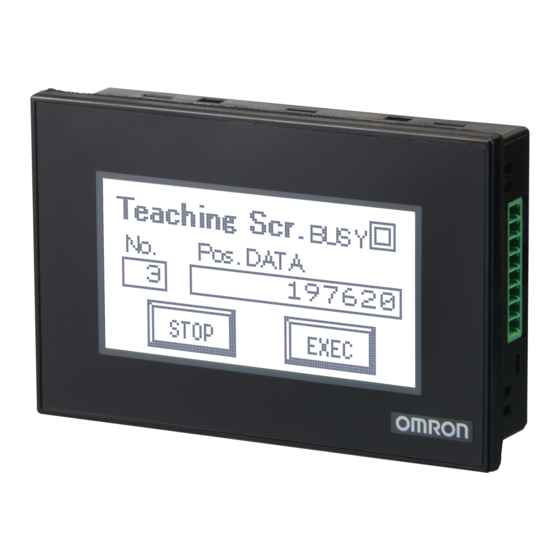
Table of Contents
Advertisement
NV-series PT
Simple Operation
Handbook
- A case of connection to a CP1E PLC -
The NV3W-V1 is added.
Table of Contents
Preparation
Required Devices 2
Wiring and Connection 4
Turning on the Power 6
Displaying the NV System Menu 7
Setting the CPIE Serial Port 8
Designing Screens
Creating New Screen Data 12
Creating Switch Parts 16
Creating Lamp Parts 19
Creating Data Parts 21
Creating Keyboard Screens 23
Creating Character Stings 26
Connecting with CP1E PLC
Transferring Screen Data 28
Advanced Usage
from CP1E 34
Connecting PC and PLC via NV 35
Advertisement
Table of Contents

















Need help?
Do you have a question about the NV3W-MR20L-V1 and is the answer not in the manual?
Questions and answers